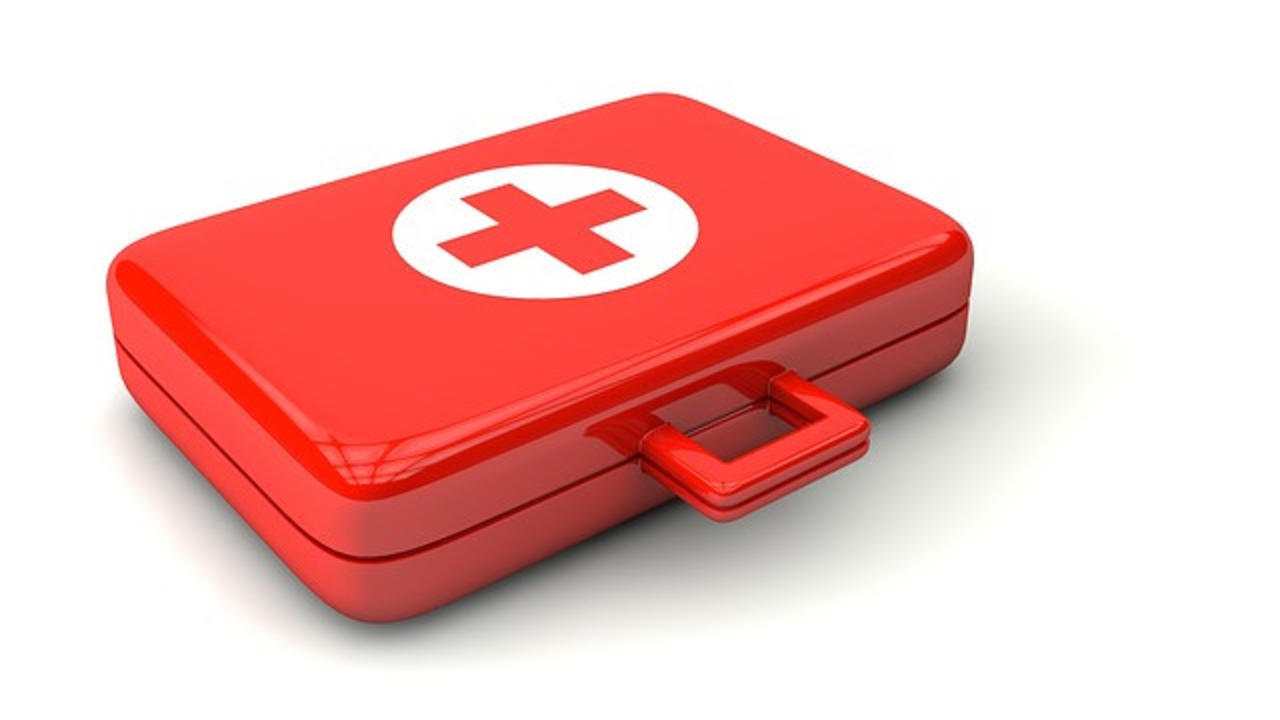How to Build a First Aid Kit

In our pursuit of self reliance we often overlook many of the small details that turn that dream into a reality. One of the things that most people overlook is the possibility of dealing with medical emergencies. Yet this is an extremely important detail that must be addressed before you run for the hills. Having a proper first aid kit on hand is a very important first step.
A little knowledge and experience can help you keep calm during an emergency. It can also help you to manage others and keep them from panicking. Having the ability to treat minor injuries or render basic support until you can consult a medical professional can potentially make the difference between life and death. At the very least, it may prevent an expensive visit to an emergency room. At an absolute minimum, you should take a basic first aid class or become a certified first responder. These skills will serve you well especially if you plan on living in a rural or isolated area.
But in order to address basic medical issues, you must have the right equipment and supplies at hand. Having an ample first aid kit and the basic knowledge to put it to proper use is extremely important. You can either purchase a standard kit or you can even build a first aid kit with minimal expense. I would recommend purchasing a well equipped commercially prepared first aid kit then adding on to that to suit our personal needs, knowledge, and ability.
Basic considerations for Building a First Aid Kit
1) Number of people in the group: Larger first aid kits simply contain more of the same basic supplies. However, the number of tools in the kit, such as scissors, tweezers, etc, remain constant.
2) Type of activity: Waterproof kits are more suitable for kayaking, boating, etc. Smaller light weight kits are suitable for hiking, running, or very short trips. Larger, more comprehensive kits are more suitable for road trips, base camp, or at home.
3) Trip risks: Cold versus hot environments, insect infested jungles versus dry open plains will have different challenges and different potential risks. Stock accordingly.
4) Trip duration: If going on a long trip, you do not want to run short of supplies before returning home. Plan accordingly.
5) Special needs: If you have allergies or potentially need an Epipen, then carry appropriate supplies in your personal kit.
6) Always carry your own kit: Regardless of someone else having a much larger first aid kit, always carry a personal kit to address your own needs.
7) Assess and restock the kit contents prior to any trip
First Aid Kit Contents
General Supplies
-Water resistant bag or pouch to hold everything
-Assortment of ziplock bags for organizing. Freezer bags work great because they are durable.
-Plastic pill bottles
-Water proof marker
-First Aid Manual
Bandages and Ointments
-Antibiotic ointment: triple antibiotic ointment can be purchased over the counter.
-Burn ointment such as Silver Sulfadiazine
-Sterile latex gloves or other sterile gloves if you have a latex allergy
-Sterile flushing solutions and cleansing agents/soap for wound care
-Sterile dressings and adhesive bandages of a variety of sizes.
-Band-Aids
-Blister treatments (mole skin)
-Butterfly bandages
-Gauze pads (various sizes)
-Medical adhesive tape
Wraps, splints, and wound covering
-Elastic wrap
-Triangular cravat bandage
-Finger splints
-SAM splint
-Rolled gauze
-Rolled, stretch to conform bandages
-First aid cleansing pad with topical anesthetic
-Hemostatic gauze
-Liquid bandage
-Oval eye pads
Medications, treatments
-Hand sanitizer
-Aloe vera gel
-Aspirin
-Ibuprofen
-Antacid tablets
-Throat lozenges
-Lubrication eye drops
-Loperamide (diarrhea)
-Poison ivy, poison oak treatment
-Insect sting relief
-Glucose or other sugar to treat hypoglycemia
-Oral rehydration salts
-Anti fungal foot powder
-Injectable epinephrine to treat allergic reactions
-Eye wash solution
-Anti-diarrhea medications
-Petroleum jelly of other lubricant
Basic Tools and Supplies
-Knife or multi-tool
-Blunt tip scissors
-Razor blade or scape (#15, #10)
-Cotton tip swabs
-Oral thermometer
-Irrigation syringe with 18 ga catheter
-Magnifying glass
-Small mirror
-Medical /surgical gloves
-CPR mask
-Steel sewing needle with heavy duty thread
-Needle nose pliers with wire cutters
-Duct tape
-Safety pins
-Note pad with water proof pen
-Medical waste bag
-Heat reflecting blanket, compact
-Heck lamp
-Whistle, preferably plastic
-Personal locator beacon or satellite messenger
Solutions
-Eye wash solution
-Chlorhexadine solution; wound cleaning and flushing
-Betadine solution: wound cleaning and flushing
-Hydrogen peroxide
Personal care
-Sun screen
-Lip balm
-Insect repellent
-Hand sanitizer
-Biodegradable soap
-Water treatment chemicals
-Collapsible water sink or basin
-Prescription medications as needed
This is a fairly extensive list of supplies that should be kept on hand at all times. However, you are not going to carry all of this while going on a day hike. For shorter trips, you will likely pick the most basic items to carry with you. However, make sure that you have the basics wherever you go. Just remember, having the knowledge and ability to deal with medical emergencies is a vital off grid skill.
Additional Posts of Interest
The Ten Essentials Needed for Survival
Building an Emergency Kit: an Important Part of Self Sufficiency
Go off grid and live well,
Patrick
Stay connected with us to receive regular updates.
Join our mailing list to receive the latest news and updates from our team. We always respect your privacy. Your information will never be shared.



